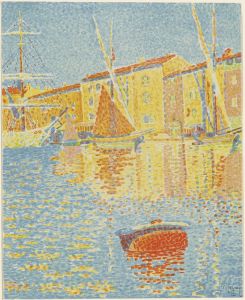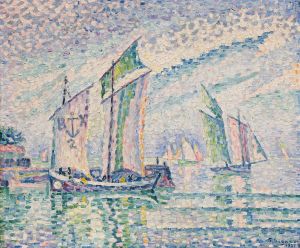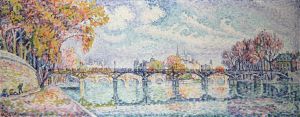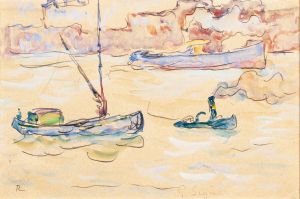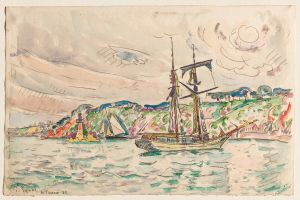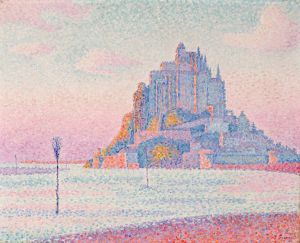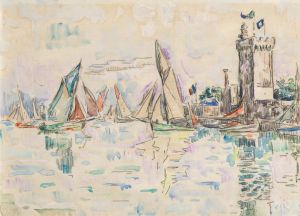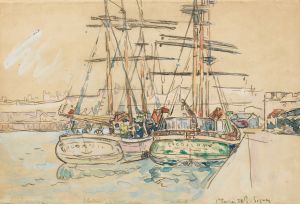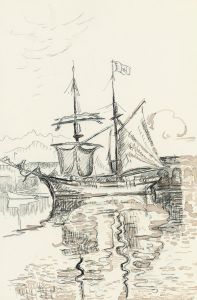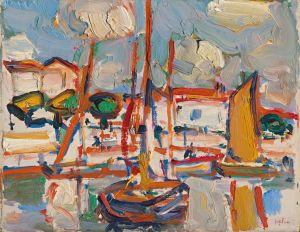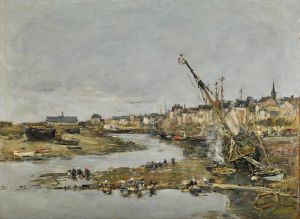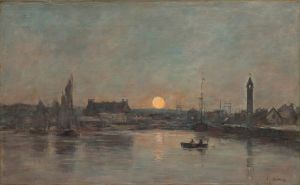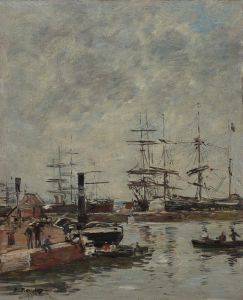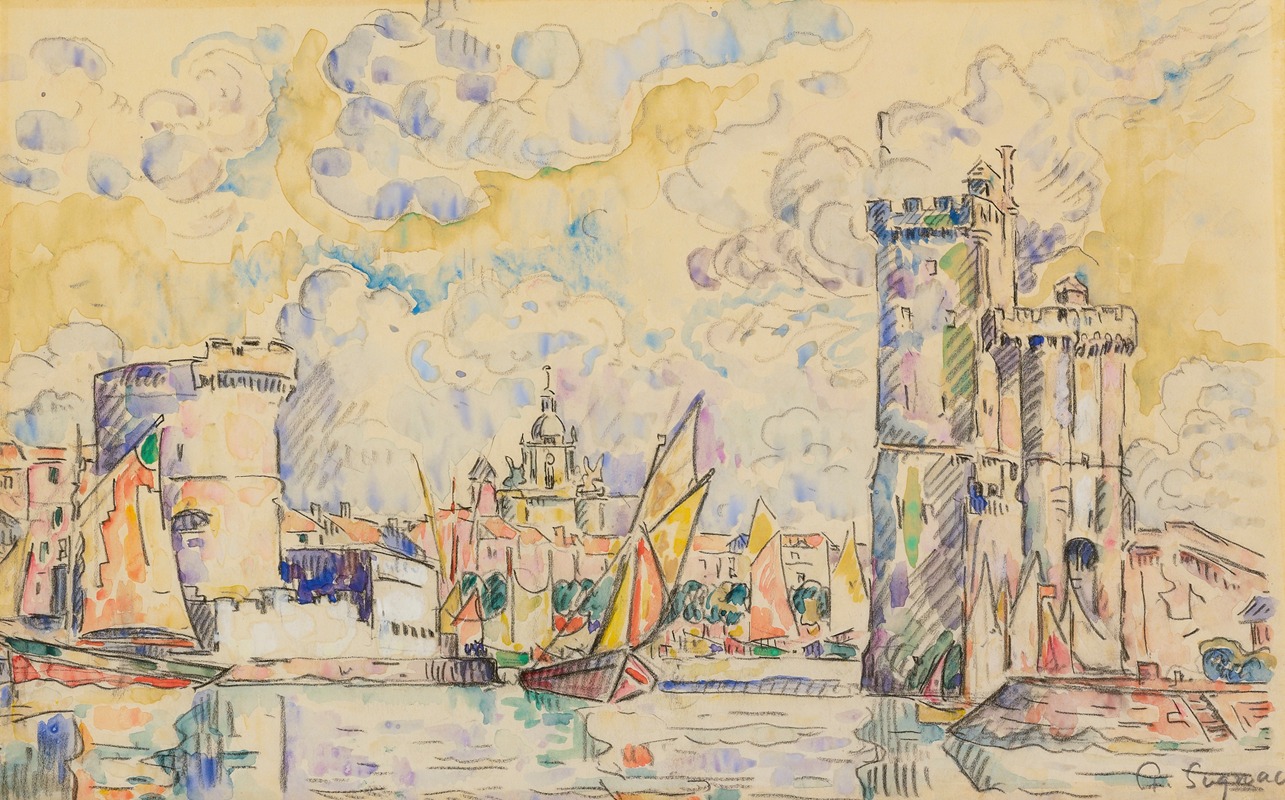
Port De La Rochelle
A hand-painted replica of Paul Signac’s masterpiece Port De La Rochelle, meticulously crafted by professional artists to capture the true essence of the original. Each piece is created with museum-quality canvas and rare mineral pigments, carefully painted by experienced artists with delicate brushstrokes and rich, layered colors to perfectly recreate the texture of the original artwork. Unlike machine-printed reproductions, this hand-painted version brings the painting to life, infused with the artist’s emotions and skill in every stroke. Whether for personal collection or home decoration, it instantly elevates the artistic atmosphere of any space.
Paul Signac's "Port De La Rochelle" is a notable work by the French Neo-Impressionist painter, known for his pioneering role in the development of the Pointillist technique. Signac, born in 1863, was a contemporary and close associate of Georges Seurat, the founder of Pointillism. This painting exemplifies Signac's dedication to capturing the vibrancy of light and color through meticulous brushwork.
Created in 1921, "Port De La Rochelle" reflects Signac's mature style, characterized by the use of small, distinct dots of color applied in patterns to form an image. This technique, known as Pointillism, was developed in the late 19th century and is a branch of the broader Impressionist movement. Signac, along with Seurat, sought to bring a scientific approach to Impressionism, focusing on the optical effects of color and light.
The painting depicts the port of La Rochelle, a historic coastal city in western France. La Rochelle has been an important maritime hub since the 12th century, known for its picturesque harbor and rich history. In Signac's depiction, the port is bathed in sunlight, with the water reflecting a myriad of colors. The composition captures the bustling activity of the port, with boats and ships anchored in the harbor, and the architecture of the city visible in the background.
Signac's use of color in "Port De La Rochelle" is particularly striking. He employs a vibrant palette, with blues, greens, and yellows dominating the scene. This choice of colors not only captures the natural beauty of the port but also conveys a sense of movement and life. The technique of Pointillism allows the colors to blend optically, creating a luminous effect that is both dynamic and harmonious.
Throughout his career, Signac was deeply influenced by scientific theories of color and perception. He believed that by placing pure colors side by side, the viewer's eye would mix them, resulting in a more vivid and intense experience. This approach is evident in "Port De La Rochelle," where the juxtaposition of complementary colors enhances the vibrancy of the scene.
Signac's work, including "Port De La Rochelle," had a significant impact on the development of modern art. His exploration of color theory and technique influenced a generation of artists, including Henri Matisse and the Fauves, who further developed the use of color as an expressive tool. Signac's legacy is evident in the continued appreciation of his work and the ongoing interest in the Pointillist technique.
"Port De La Rochelle" is housed in the Musée d'Orsay in Paris, which holds an extensive collection of Impressionist and Post-Impressionist masterpieces. The painting remains a testament to Signac's skill and vision, capturing a moment in time with precision and beauty. Through his innovative use of color and form, Signac invites viewers to experience the world through a lens of light and color, offering a glimpse into the vibrant life of a historic French port.





